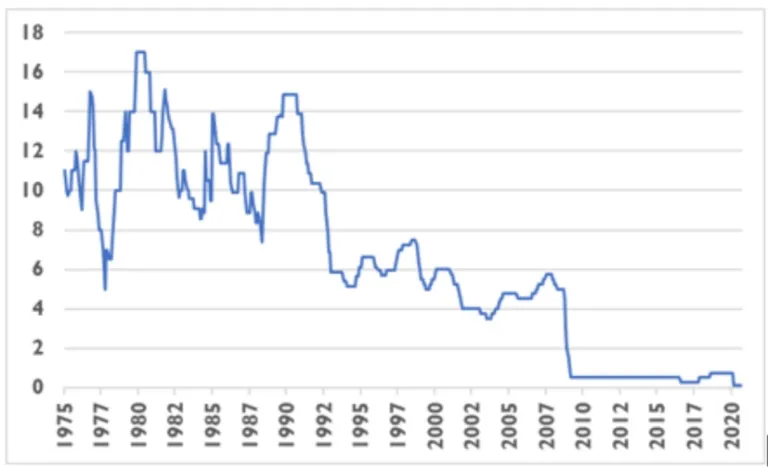
How are defined benefit pension transfer values calculated?
What we will cover in this post
In the past decade, huge numbers of people have transferred their final salary/defined benefit pensions to a SIPP or QROPS as Cash Equivalent Transfer Values have soared.
However, since the start of 2022, these valuations have started to fall back and I have had numerous enquiries from people wanting to know why their pension transfer value has dropped.
In this post, we will look at the nuts and bolts of how a defined benefit pension cash transfer value is calculated.
What is a Cash Equivalent Transfer Value (CETV)?
A CETV (also known as a Final Salary Pension Transfer Value) is an amount that is offered to you in exchange for you giving up your entitlement to an inflation adjusted, guaranteed-for-life pension.
It should represent a fair lump sum amount for the benefits being relinquished.
How is a CETV calculated?
Unfortunately, the calculations that are used to value defined benefit pension transfer entitlements differ from scheme to scheme.
As a result, one scheme can offer a transfer value of 12 times the deferred pension value and another scheme can offer 40 times the deferred pension.
To many, the process can seem like a big, black box.
As a help, here are some of the factors that could affect how much you are offered.
1. Interest rates
Anticipated scheme investment returns are linked to interest rates.
These anticipated returns are used to “discount” the value of the transfer offer that is made.
The lower the return, the higher the sum needed to pay the pension and hence the higher the transfer value.
This obviously works in reverse too. The higher the anticipated return (read interest rates), the lower the transfer value.
It is estimated that a rise of just one percentage point in interest rates could see transfer values fall by as much as 25%.
2. Your age
Generally, transfer values rise as you get closer to retirement.
3. Life expectancy
In 1980, life expectancy in the UK was 73. In 2020, it had risen to 81.
For pension schemes, this is a big issue as it means needing to make payments to retirees for an additional 8 years.
4. Cost of living
Final salary pension payments rise each year, based on the cost of living.
The way that these rises are calculated is insanely complex, but the key point is that if inflation is expected to be higher, then transfer values are likely to increase too.
5. Scheme retirement age
Each scheme has a ‘normal retirement age’; usually 60 or 65. All other things being equal, a pension payable at 60 is worth a lot more than a pension payable at 65.
6. Spouses benefit
A pension that pays a large pension to a surviving spouse is more valuable than one that does not.
7. How much your pension provider wants to get rid of you
Some employers and schemes are keen to encourage people to transfer their pensions out because this reduces their risk, in terms of the long-term future cost of paying your pension.

Why are interest rates the biggest threat to your pension transfer value?
Pension schemes have a considerable reliance on government bonds and government bonds produce a yield based on interest rates set by the Bank of England.
According to the Pension Protection Fund’s purple book, pension scheme allocation to government bonds has increased from 28% of assets held in 2006 to 63% in 2019.
As mentioned earlier, interest rates have an inverse relation to the transfer value. I.e. lower yields, higher transfer value and vice versa.
As you can see from this chart, UK interest rates have been virtually zero for more than a decade now.

At the same time, UK defined benefit pension transfer values reached record levels, peaking in November 2021.
This tailwind for pension transfer values is likely to reverse in the near future.
With UK inflation expected to hit 6% this spring, we can expect Bank of England base rates to finally start to increase.
How will rising interest rates affect pension transfer values?
To illustrate how rising interest rates might affect transfer values, imagine that someone wants to receive £1,000 pa in interest.
If interest rates are 0.25%, they would need to have £400,000 in the bank to generate the required amount.
However, if interest rates rise to 0.5%, then they only need to have £200,000.
For the purpose of this illustration, if we make the assumption that this is how pension transfer values are calculated, it shows that the scheme would not need to offer such a high transfer value if interest rates increase.
Understanding Defined Benefit Pension Transfer Values
FAQs
A CETV is the lump sum amount offered to you in exchange for giving up your entitlement to an inflation-adjusted, guaranteed-for-life pension from a defined benefit scheme. It represents a fair value for the benefits being relinquished.
Interest rates are a significant factor in determining CETVs. Lower anticipated returns, linked to low interest rates, result in higher transfer values because a larger sum is needed to generate the promised pension payments. Conversely, higher interest rates can lead to lower transfer values.
Yes, generally, the closer you are to your scheme’s normal retirement age, the higher your transfer value tends to be. This is because the scheme has fewer years to invest the funds before you start drawing your pension.
Increased life expectancy means that pension schemes anticipate paying benefits for a longer period, which can affect the calculation of transfer values. Longer payment periods may lead to adjustments in the transfer amount offered.
Pension payments often increase annually based on the cost of living. If higher inflation is expected, transfer values may increase to account for the anticipated rise in future pension payments.
The normal retirement age (NRA) is the age at which you can start receiving your pension benefits. A scheme with an NRA of 60 will typically offer a higher transfer value than one with an NRA of 65, all else being equal, because the benefits commence earlier.
Pensions that include provisions for a surviving spouse or partner are more valuable, as they commit to paying benefits beyond the original member’s lifetime. Consequently, transfer values may be higher for pensions with generous spousal benefits.
Yes, some schemes may offer higher transfer values to encourage members to transfer out, thereby reducing the scheme’s long-term liabilities. The scheme’s funding position and strategic objectives can impact the transfer values offered.
An increase in interest rates can lead to a decrease in transfer values. For example, a rise of just one percentage point in interest rates could reduce transfer values by as much as 25%.
Transferring a defined benefit pension is a significant decision that depends on individual circumstances, including financial goals, health, and risk tolerance. It’s essential to seek independent financial advice to understand the implications fully before proceeding.
The Bottom Line
The purpose of this post is to be informative and shed some light on the “black box” that is the pension transfer value calculation process.
It should not be viewed as a recommendation to accept or reject a pension transfer value.
For that, you take personalised financial advice that is based on your unique needs and circumstances.

Talk to an Expert
Your pension transfer value (CETV) is one of the most misunderstood numbers in personal finance. It can look surprisingly high or frustratingly low — and without context, it is almost impossible to know whether a transfer is in your best interests.
I’m Ross Naylor, a UK-qualified Chartered Financial Planner and Pension Transfer Specialist with nearly 30 years’ experience helping people — including many British expats — understand what their CETV actually represents, how it is calculated, and whether transferring is a smart move or a serious financial mistake.
I firmly believe your location in the world should never be a barrier to expert, impartial, and transparent financial advice you can trust.
Whether you’re unsure why your CETV has changed, how interest rates and scheme funding affect transfer values, whether a transfer could improve your flexibility, or whether keeping your defined benefit scheme is the safest option, I’ll help you make an informed, evidence-based decision.
Book a confidential consultation

